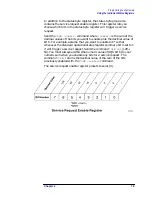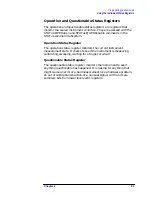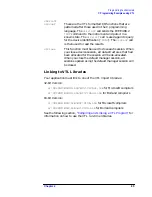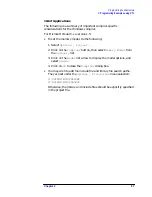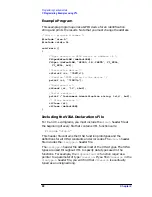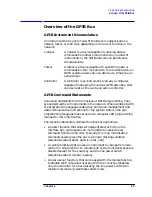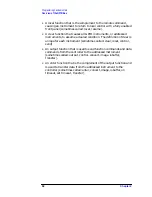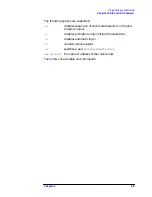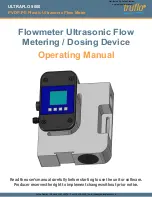
90
Chapter 2
Programming Fundamentals
C Programming Examples using VTL
The session returned from
viOpenDefaultRM
must be used in the sesn
parameter of the
viOpen
function. The
viOpen
function then uses that
session and the device address specified in the rsrcName parameter to
open a device session. The vi parameter in
viOpen
returns a session
identifier that can be used with other VTL functions.
Your program may have several sessions open at the same time by
creating multiple session identifiers by calling the
viOpen
function
multiple times.
The following summarizes the parameters in the previous function
calls:
sesn
This is a session returned from the
viOpenDefaultRM
function that identifies the resource manager session.
rsrcName
This is a unique symbolic name of the device (device
address).
accessMode
This parameter is not used for VTL. Use VI_NULL.
timeout
This parameter is not used for VTL. Use VI_NULL.
vi
This is a pointer to the session identifier for this
particular device session. This pointer will be used to
identify this device session when using other VTL
functions.
The following is an example of opening sessions with a GPIB
multimeter and a GPIB-VXI scanner:
ViSession defaultRM, dmm, scanner;
.
.
viOpenDefaultRM(&defaultRM);
viOpen (defaultRM, “GPIB0::22::INSTR”, VI_NULL,
VI_NULL, &dmm);
viOpen (defaultRM, “GPIB-VXI0::24::INSTR”, VI_NULL,
VI_NULL, &scanner);
.
.
viClose (scanner);
viClose (dmm);
viClose(defaultRM);
The above function first opens a session with the default resource
manager. The session returned from the resource manager and a device
address is then used to open a session with the GPIB device at address
22. That session will now be identified as dmm when using other VTL
functions. The session returned from the resource manager is then used
again with another device address to open a session with the GPIB-VXI
device at primary address 9 and VXI logical address 24. That session
will now be identified as scanner when using other VTL functions. See
the following section for information on addressing particular devices.
Summary of Contents for E4406A VSA Series
Page 4: ...4 ...
Page 59: ...59 2 Programming Fundamentals ...
Page 124: ...124 Chapter2 Programming Fundamentals Using the LAN to Control the Analyzer ...
Page 125: ...125 3 Programming Examples ...
Page 164: ...164 Chapter3 Programming Examples Using Java Programming Over Socket LAN ...
Page 165: ...165 4 Programming Command Cross References ...
Page 379: ...379 6 Error Messages ...
Page 412: ...412 Chapter6 Error Messages Error Message Descriptions ...




